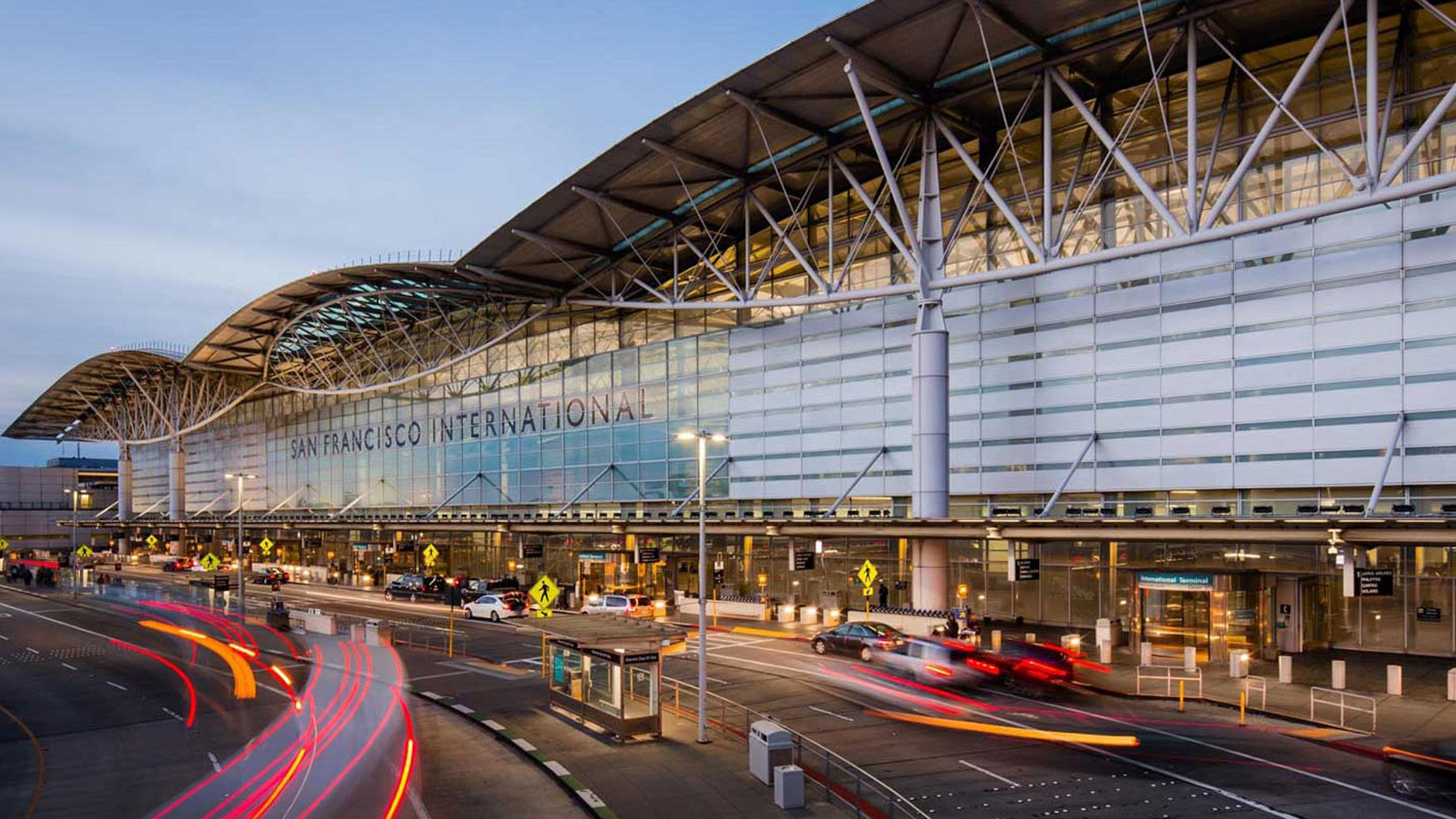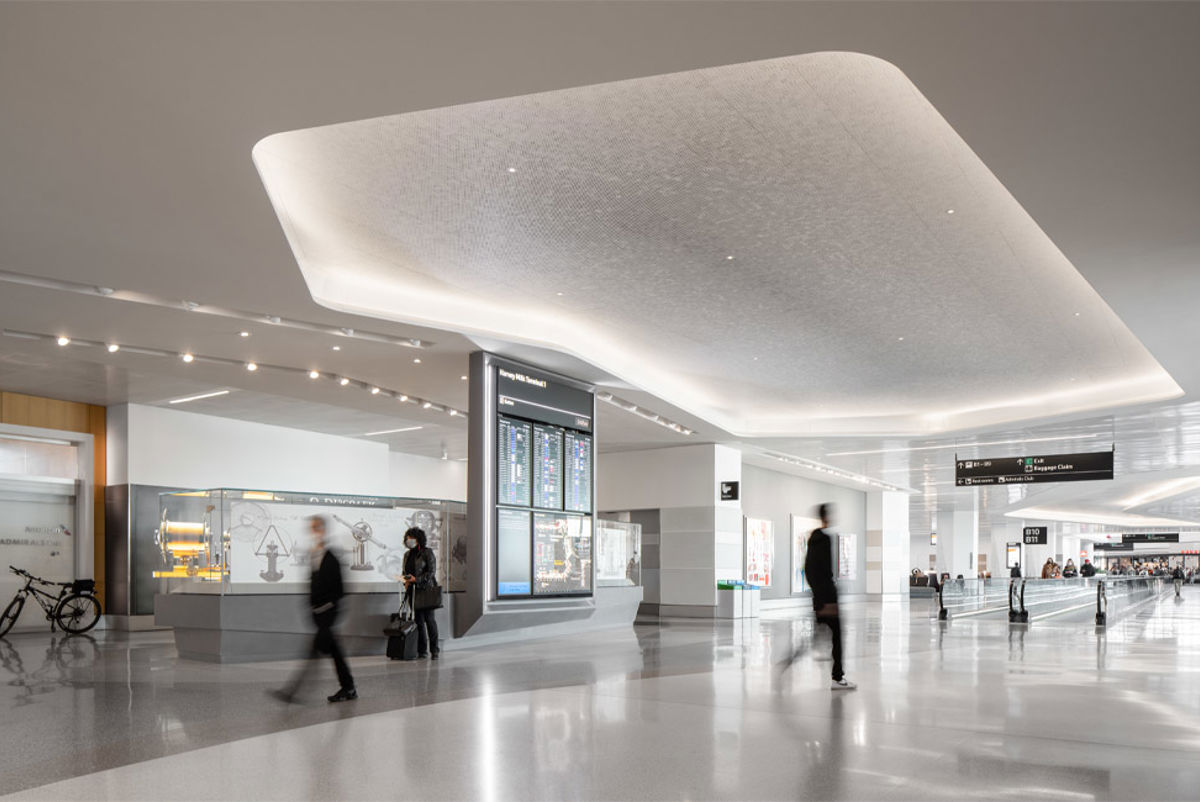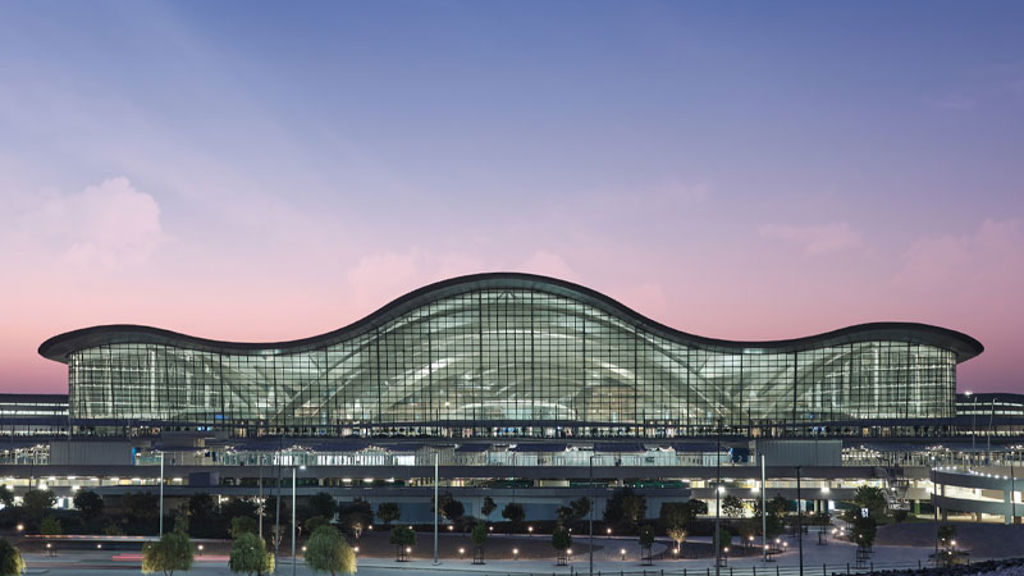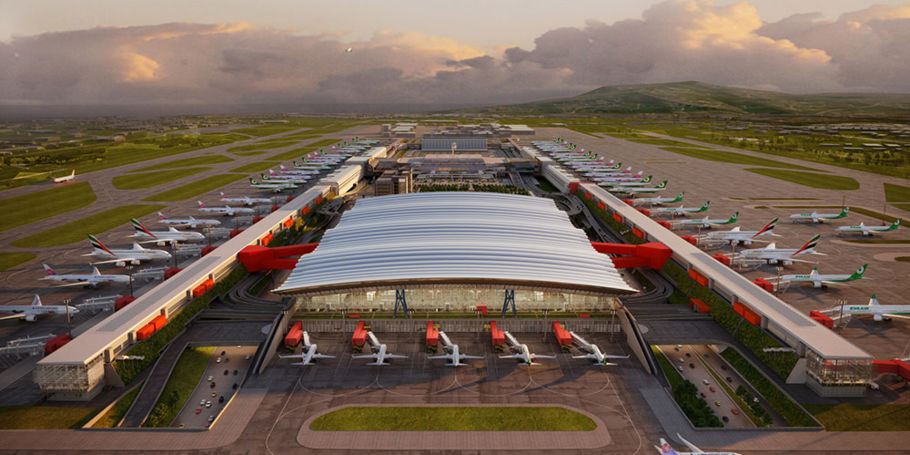Creating a comprehensive roadmap for decarbonizing an airport campus
San Francisco International Airport Zero Net Energy Plan

Increasing threats posed by climate change, including heat waves, wildfires, and sea level rise, are causing significant environmental, economic, and social impacts worldwide. These hazards can be particularly devastating to the aviation sector. Many airports are built at sea level, making them at risk for flooding, and extreme heat can make airport pavement too soft for safe operation. At the same time, airports are a significant contributor to global greenhouse gas emissions.
To reduce carbon emissions and contribute to the global effort to decarbonize, San Francisco International Airport (SFO) has embarked on a strategic initiative to achieve zero net energy (ZNE) consumption. SFO recognizes the financial, operational, and community-driven imperative to both mitigate climate impacts and prepare for a climate-impacted future.
Leading the consulting team, Arup and local business enterprise partner stok conducted a comprehensive study to identify how SFO could reduce energy consumption across their 102-building campus as they strive to become the most sustainable airport in the world. Arup helped devise the SFO ZNE Plan, which provides a comprehensive multi-faceted strategy for cost-effective energy reduction to achieve the airport’s ZNE goals. When implemented, the plan will result in an annual energy reduction of 60% or 1.3bn kBtu per year — the equivalent of the yearly energy use of 27,000 households.
Analyzing the challenge
Serving thousands of passengers daily over long hours of operation, airport terminals are very energy intensive. Together with other essential non-terminal buildings, including hangars, air traffic control towers, and the central utility plant, airport campuses use a lot of energy. To identify the scope of the ZNE Plan, SFO convened leadership, stakeholders, and the Arup consulting team to create a consensus vision. We then analyzed the energy consumption, design standards, and construction processes for current operations, as well as planned expansions of the airport, to determine where to target emissions reduction solutions.
Arup’s analysis found that 95% of SFO’s energy use occurs in campus buildings, making them the key focus for decarbonization. Domestic and international terminals are responsible for almost half of all energy consumption. The central utility plant — which provides terminals with hot water, heating, and cooling — makes up over 20% of total energy use.
After gathering data on energy use, Arup conducted benchmarking to compare the building data at SFO with industry averages. As passenger terminals are unique, energy-use data was not widely available, and benchmarking for SFO proved challenging. Passenger terminals are unlike typical buildings due to the fact that they are occupied every day of the year and they require intensive energy uses like heating and cooling, baggage handling systems, moving walkways, and providing power and ventilation to the aircraft parked at its gates.
To tackle this benchmarking challenge, Arup compared two distinct data sets: energy use intensity and building age. The intersection of these metrics helped Arup identify patterns and opportunities for energy savings. For example, buildings using a large amount of energy are better candidates for a capital equipment upgrade if they are older, while newer buildings with unexpectedly high energy use could likely benefit from a less costly retro-commissioning process.
Identifying key strategies
Combining the results of the benchmarking study with research that SFO was conducting with a variety of consultants, Arup suggested a roadmap for energy reduction across SFO’s campus that aligns with their climate action goals. Due to the diversity of the energy systems at SFO, Arup recommended a multi-pronged approach for reaching the airport’s ZNE goals.
The first half of the plan focuses on running an efficient airport campus, as decarbonizing buildings was identified as the key to achieving ZNE at SFO. Arup took as a baseline SFO’s current airport development plan, which outlines new construction and the demolition of some older buildings, which would consolidate the campus into fewer structures that require less power. An upgrade to the central utility plant was also suggested in which it would be transformed into a heat recovery chiller plant with efficient all-electric equipment. In addition, for all new construction at the airport, Arup encouraged the incorporation of high-performance energy efficiency strategies and set aggressive targets for energy use intensity that were incorporated into a later update of their Sustainable Planning, Design and Construction Standards.
The second part of the plan addresses the airport’s remaining energy use once cost-effective efficiency measures are implemented. Generating and storing renewable energy onsite through solar power and battery storage was suggested where feasible. For all other energy requirements, SFO will purchase off-site renewable energy from sources such as utility-scale wind and solar farms.

Implementing energy savings
As terminals are the biggest energy users, they offer the greatest opportunities for energy savings to accomplish ZNE goals. Arup has already helped SFO in rebuilding Terminal 1, which is renamed the Harvey Milk Terminal 1 after the noted local gay rights activist and politician.
The new Terminal 1 features displacement ventilation: instead of cooling the entire volume of the terminal space, cool air is released close to the floor, which pushes warm air toward the ceiling. This approach creates a cool layer around passengers at the bottom seven feet of the terminal, allowing for significant energy and cost savings by not conditioning the upper air. When first implemented in remodeled portions of SFO’s Terminal 2 a decade ago, this approach reduced power usage by 20%, and became SFO’s new standard for HVAC design. In addition to displacement ventilation, the design for Terminal 1 also included radiant ceilings, a first-of-its-kind system for heating and cooling the passenger hold rooms. The method uses water circulated through pipes rather than air moved by fans, which uses much less energy. The combination of displacement ventilation and radiant ceilings creates a comfortable environment for travelers while also saving cost, energy, and space. Other improvements to Terminal 1 include energy-saving LED lighting as well as a modular baggage handling system that uses about half the energy of a conventional conveyor-belt system.
To bring about energy savings in the rest of the campus terminal complex, an extensive upgrade to SFO’s central utility plant was proposed. Because the plant currently relies on natural gas, it is responsible for 83% of operational carbon emissions and 21% of the total campus energy use. By making the switch to an all-electric heat recovery chiller plant, SFO will significantly cut energy costs, particularly at peak hours, as it will be able to store hot and chilled water for future use and eliminate its largest source of carbon emissions.
Throughout the research, planning, and design stages, Arup is guiding SFO in their timely and cost-effective journey to net zero, setting the pace for the aviation industry and positioning SFO as an airport sustainability leader.
Continuing our sustainability work with SFO
After reviewing architecture and engineering standards for SFO’s ZNE goals, Arup separately updated the airport’s overall Sustainable Planning, Design, and Construction Standards. These standards go beyond the energy and climate scope of the ZNE Plan to provide the same level of sustainable design and engineering for all aspects of SFO’s campus, including biodiversity, water, materials and resources, and human health.
To create the new standards, Arup reviewed common green building and infrastructure rating systems, like LEED, WELL, Living Building Challenge, and Envision to create “good,” “better,” and “best” options for SFO’s guidelines. We then engaged a broad range of SFO stakeholder groups as well as a multidisciplinary team of Arup engineers and local business partners to set appropriate standards for each topic area that are specific to SFO’s buildings and operations. The updated guidelines align with industry standards to help ensure the guidelines will stay up to date rather than requiring frequent changes as related standards rise over time. Through these updates, Arup pushed the highest standards of sustainability, helping solidify SFO as a sustainability leader in the aviation sector.
stok
What we delivered
-
A comprehensive study to identify how SFO could reduce energy consumption across its 102-building campus.
Get in touch with our team
Projects
Explore more aviation projects:

Redefining Japan’s future airport city
Narita Airport City, Japan

Transforming the travel experience at Zayed International Airport
Zayed International Airport Terminal A, United Arab Emirates

Crafting a New York–inspired atmosphere for passengers traveling through JFK’s global gateway to the world
JFK New Terminal One Art, Branding, and Digital Experience Program, USA

Helping Vancouver International Airport to prepare for unexpected weather
Vancouver International Airport After Action Review, Canada
Get in touch with us
If you'd like to speak to one of our aviation experts about any of the issues raised on this page or a potential collaboration then please get in touch by completing the form.

